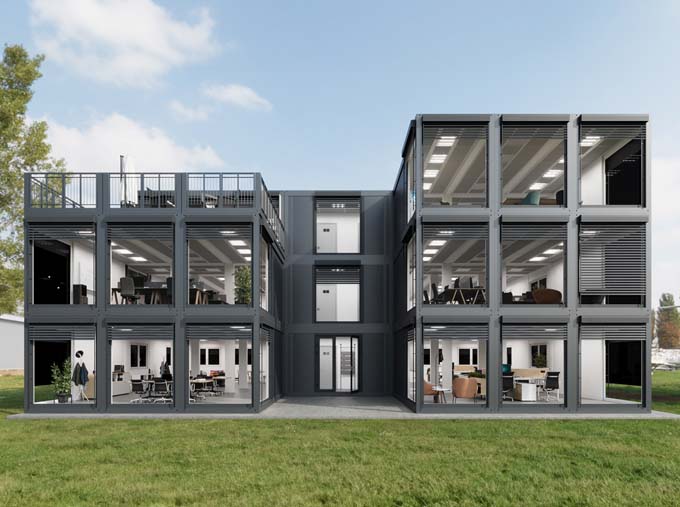Swiss building program saves 5.4 billion kWh and 1.2 million t CO2
The federal and cantonal building program is an important funding instrument of Swiss energy and climate policy. In 2019, around 265 million Swiss francs in subsidies were disbursed, a quarter more than in the previous year.

The building program again generated a positive employment effect of 2100 full-time equivalents and about 82 million Swiss francs of additional domestic value added in 2019.
Most of the contributions went to thermal insulation projects (Fr 133 million). The biggest growth in the reporting year was in system renovations (+70 to 60 million Swiss francs). Over their lifetime, the measures implemented in 2019 thanks to subsidies will reduce the energy consumption of the Swiss building stock by 5.4 billion kilowatt hours and CO2 emissions by around 1.2 million tons of CO2.
Building envelope and system renovations most in demand
In total, around 265 million Swiss francs in subsidies were paid out in the reporting year (2018: 211 million). Thermal insulation projects accounted for the largest share with CHF 133 million. In second place, with CHF 60 million, are system renovations, whereby the comprehensive renovation of the building envelope is often accompanied by a change in the heating system. Building services projects, including heating system replacements, solar and ventilation systems, were subsidized to the tune of 35 million Swiss francs. 4100 fossil systems were replaced by heating systems with renewable energy, most frequently by a heat pump. Indirect measures in the areas of information/communication, education and quality assurance were supported with 10 million Swiss francs in the reporting year.
Energy consumption and CO2 emissions reduced
The measures promoted in the year under review save 5.4 billion kWh and 1.2 million t CO2 over their lifetime. At 205 Fr./t CO2, the impact achieved declined compared to the previous year (159 Fr/t CO2). This is partly due to the fact that higher subsidy rates have been granted since 2019 in order to increase the currently low renovation rate. A higher renovation rate is necessary for Switzerland to achieve its energy and climate targets in the building sector. However, the higher subsidy rates reduce the impact per subsidy franc over the lifetime of a measure. Another reason is the increase in system renovations. Because of the higher investment costs, the effect of system renovations per franc of funding is lower than for individual measures. And finally, more subsidies were distributed for indirect measures. No direct effect can be calculated for these.
The details on the results and impacts of the Buildings Program as well as the distributions in the individual cantons can be found in the new 2019 Annual Report at: www.dasgebaeudeprogramm.ch/jahresbericht
About The Building Program
Buildings are responsible for around 40 percent of Switzerland's energy consumption and a third of its CO2 emissions. More than one million houses are not or barely insulated and thus in urgent need of energy renovation. In addition, two-thirds of Swiss buildings are still heated by fossil fuels or electricity. With the Building Program, which has been in place since 2010, the federal government and the cantons aim to significantly reduce the energy consumption and CO2 emissions of the Swiss building stock. The Buildings Program is thus an important pillar of Swiss energy and climate policy.
The Buildings Program is financed by partially earmarked funds from the CO2 tax and from cantonal subsidies. It supports measures to reduce the energy consumption or CO2 emissions of properties. Funding is provided, for example, for thermal insulation of the building envelope, replacement of fossil or electric heating systems with heating systems using renewable energies or by connection to a heating network, comprehensive energy-efficient renovations or renovations in larger stages, and new buildings to the Minergie-P standard.
The cantons determine individually which measures they support and under which conditions. The basis for this is the Harmonized Funding Model of the cantons (HFM 2015).









